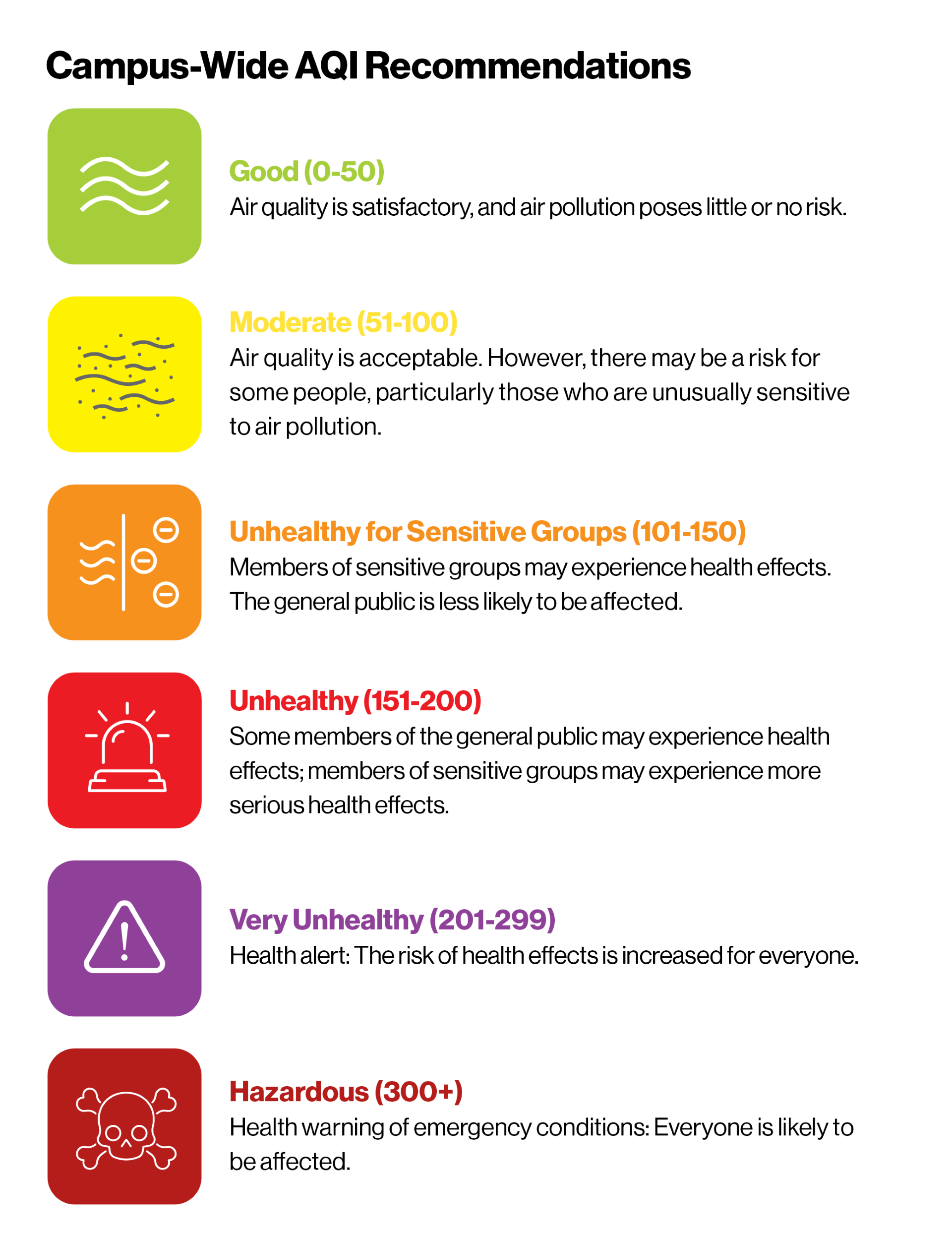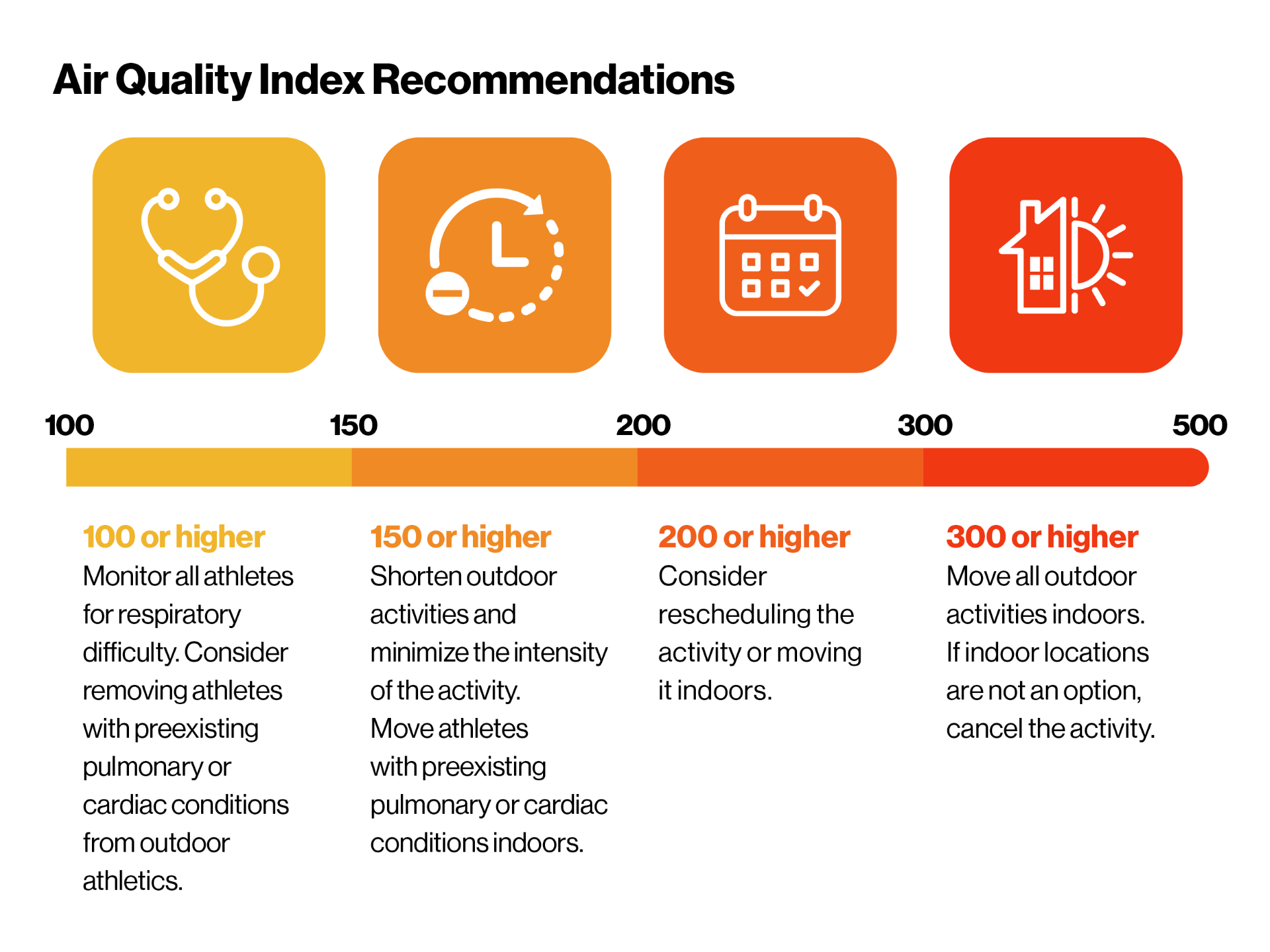Take Precautions Against Air Quality Concerns
Increasingly, air pollutants — whether general, seasonal, or from a temporary cause such as nearby wildfires — are wreaking havoc with air intake, creating air quality concerns on campus. These concerns are magnified for people, including students and employees, who are immunocompromised or who already have air intake issues such as asthma.
It’s important to monitor air quality to protect people or remove them from unsafe spaces.
Indoors
Creating an Indoor Air Quality (IAQ) Management Plan can help your institution monitor and respond to potential air quality issues, including:
- HVAC systems that are broken or contaminated by pollutants
- Pests such as rodents and dust mites that produce allergens and irritants
- Mold growth, which is often caused by moisture
Within your IAQ Plan:
- Appoint an IAQ Coordinator, someone in your institution with health and safety education and knowledge. Authorize this person to receive and respond to reports of air quality concerns.
- Create an IAQ walkthrough to identify problems related to cleaning, fresh air ventilation, pests, nearby pollutants, pesticides, moisture and humidity, mold, and chemicals.
- Fix problems identified in the walkthrough in a timely manner.
- Conduct your IAQ walkthrough annually. Be sure to inspect all indoor spaces. Identify new problems, evaluate previously identified problems, and confirm corrective actions.
- Prohibit indoor air pollutants such as cigarette smoke or burning candles.
Outdoors
For outdoor air quality concerns, your focus is monitoring and response.
As wildfires and dust storms become increasingly common, their effects include significantly reduced air quality in nearby locations. Reduced air quality also can come from vehicle exhaust and industrial emissions. The National Weather Service’s (NWS’) Air Quality Forecast System provides a real-time Air Quality Index (AQI).
To address concerns:
- Assign a person or team to monitor the NWS AQI.
- Create an outdoor air quality policy.
- Communicate warnings and instructions to students and staff when the AQI exceeds a predetermined point, often 100 or 150 (see chart below).
Include in your outdoor air quality policy:
- Your institution’s AQI requirements
- For K-12 schools, the Centers for Disease Control & Prevention’s Air Quality and Outdoor Activity Guidance for Schools
- Actions students and staff should take during increased AQI

Source: AirNow AQI Basics
Athletics
Air quality issues pollutants cause can create increased risk of injury for athletes, especially because they often inhale deeply while exercising. The NCAA recommends:

The National Federation of State High School Associations’ position statement on air quality notes that activities moved indoors due to air quality issues should ensure the HVAC system properly filters indoor air. If the HVAC system can’t properly filter pollutants, indoor air quality may be worse than outdoor.
More From UE
Crisis Response: A Library of Tabletop Exercises (Climate-Related Crises: Poor Air Quality)
Severe Weather Events: Mitigate Impact on Employees
Severe Weather at Outdoor Athletic Events
Additional Resources
Environmental Protection Agency: Framework for Effective School IAQ Management
About the Author
-

Melanie Bennett, Esq., ARM-E
Senior Risk Management Counsel
In her role on UE’s Risk Research team, Melanie dives into timely topics affecting education. Her areas of expertise include protecting minors, enterprise risk management (ERM), technology accessibility, and athletics. Prior to joining UE, she interned at the U.S. Department of Education’s Office for Civil Rights. Melanie serves on the Higher Education Protection Network’s (HEPNet’s) Board of Directors.